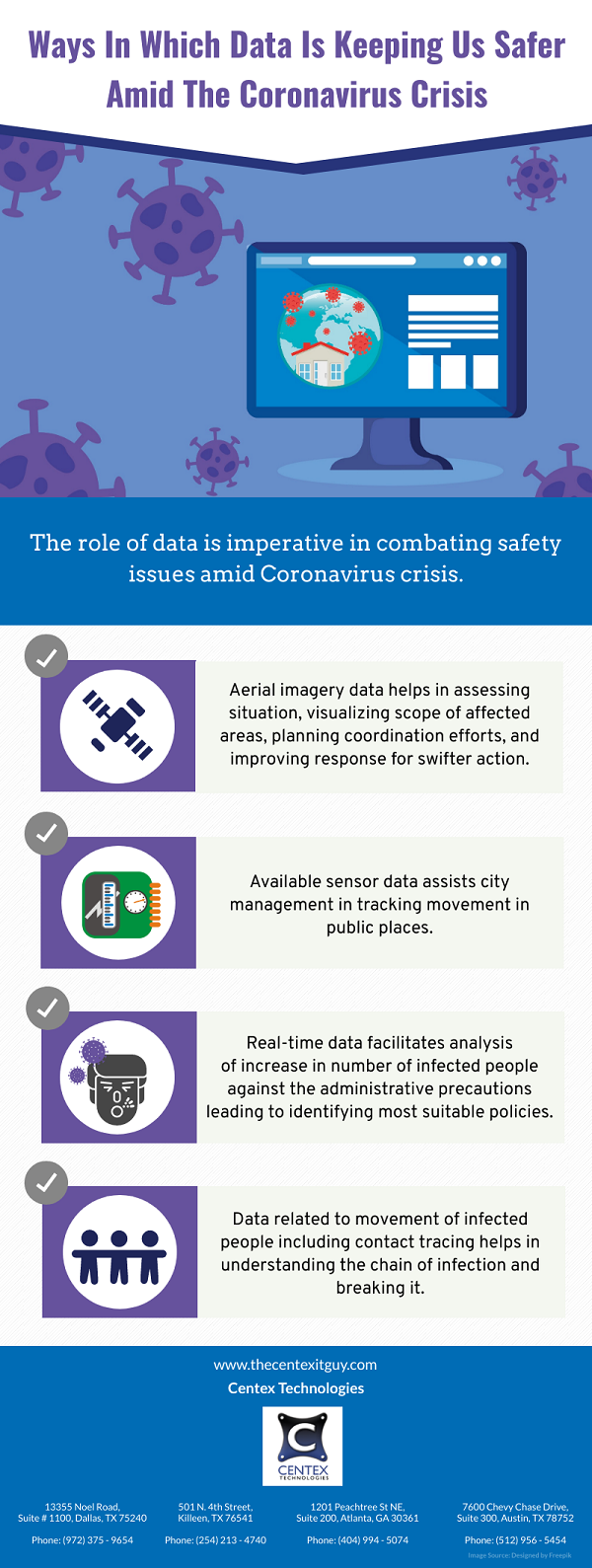PDF Version: Ways-In-Which-Data-Is-Keeping-Us-Safer-Amid-The-Coronavirus-Crisis
COVID-19 has increased the workload for IT Service Management (ITSM) teams. The sudden increase in incident queues is partly because of first-time work-from-home employees trying to securely log in and partly contributed by the overcrowding of IT systems as they were not designed to handle high volumes. Organizations are in dire need to improve ITSM in order to resolve the incidents timely and ensure uninterrupted operations.
AI can help businesses in effectively improving ITSM by streamlining the incident resolution process.
Incident Deflection: A major part of incident queues is occupied by connectivity and security login issues. AI can be used to analyze an incoming issue and offer related help files and step-by-step videos. The users can get assistance from these resources to handle common issues themselves, thus reducing the number of tickets. It will also improve customer satisfaction by equipping users with relevant knowledge to tackle such issues in the future.
Efficient Allotment: If an issue cannot be handled by incident deflection, AI can help in efficient allotment of the incident ticket. AI algorithms can be trained to interpret the nature of an IT request and an accurate category of data included in the ticket. Further, it can match the information with the strengths and capabilities of available agents. This will facilitate in reducing the resolution time of incoming requests. This approach will also help in reducing errors in resolving tickets as the requests are handled by agents equipped with the relevant skill set.
Accuracy: In order to ensure efficient resolution of an IT ticket, it is imperative to acquire complete and accurate data. The users are required to provide thorough information. However, many users may not be aware of the information they need to provide, where they can find it or what is the meaning of a technical term referred by an agent. AI can be used to point the users in the right direction by suggesting a service catalog form that collects all the necessary information for submitting a complete ticket. This will help in avoiding the back and forth juggling of the ticket between the agent and the user, leading to the early resolution of the issue.
Being Proactive: AI can recognize any patterns within incidents. It can identify/prevent SLA breaches and equip decision-makers with the information required for making necessary changes to ITSM strategies. This will allow the ITSM teams to be proactive and handle incident queues aptly.
For more information on role of AI in improving IT service management, contact Centex Technologies at (254) 213 – 4740.
A Digital Twin can be defined as a fully mapped digital version of a real-world system. In terms of business, a Digital Twin is described as a digital entity that simulates the structure of an organization. Digital Twin’s technology has moved beyond its initial phase and is now used to merge worlds of IoT, AI, and data analytics. As the business models are gaining complexity, Digital Twins also assist in advance planning and ROI citations.
Most businesses are implementing Digital Twins because of an array of benefits offered by them:
- Product Insight: A Digital Twin is a comprehensive collaboration of AI, machine learning, and data analytics. This allows the manufacturers to gain an insight into real-world usage of their products and predict any issues before they actually arise. This gives them an opportunity to take preventive measures to overcome such risks in advance; thus reducing business downtime and overhead expenditures.
- Supply Chains: Combining product and packaging data with Digital Twins technology can help in improving efficiency by automating packaging selection. It will also help supply chain managers in optimizing packaging strategies for product protection. Further, the supply chain is impacted by micro-variables such as temperature, humidity, etc. The data on micro-variables can be collected from sensors placed across different geographic locations of the supply chain. This data can be fed into the Digital Twin model of the supply chain network to predict and control their impact.
- Customer Service: A Digital Twin of a business organization can be used to analyze customer behavior based on customer feedbacks. This facilitates the development of new products and improvement of existing products in a customer and data-driven way resulting in improved customer satisfaction.
- Resource Allocation: Understanding the priorities of parallel business processes and allocating the resources accordingly is necessary for effective management of business operations. Digital Twin models of business networks equip the management with the data required to allocate the resources efficiently. For Example: A Digital Twin model of a healthcare organization (such as a hospital) can be set up completely with all its elements including equipment, doctors, administrators, etc. This model can be used to get real-time updates on patients’ health with the help of sensors for quick analysis and decision making. This reduces the patient wait – time and can prove life-saving in time-sensitive scenarios.<
For more information on Digital Twins and benefits of implementing them in business, contact Centex Technologies at (254) 213 – 4740.


